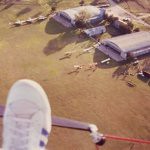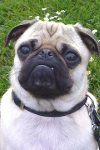Keith
BETA testers for my HENDY 302 please
Moderators: Guru's, The Ministry
-
Dev One
- Vintage Pair

- Posts: 2591
- Joined: 10 Jul 2009, 08:33
- Location: Chacombe about 2 mile east of M40 J11
Re: BETA testers for my HENDY 302 please
Keith
Re: BETA testers for my HENDY 302 please
Maybe it belongs to Peter Watkins. 
 Poor Peter. This one off aircraft is really going to limit his repaint possibilities.
Poor Peter. This one off aircraft is really going to limit his repaint possibilities. 
Brian
Brian
-
Dev One
- Vintage Pair

- Posts: 2591
- Joined: 10 Jul 2009, 08:33
- Location: Chacombe about 2 mile east of M40 J11
Re: BETA testers for my HENDY 302 please
But maybe my next will test his B+W colour interpretation to the limit- there were 22 of them built, but with 3 different engine types; Gipsy Majors, Napier Javellins & Cirrus Hermes IV, in fact a logical development of the Hendy - the D type Percival Gull.
Keith
Keith
Re: BETA testers for my HENDY 302 please
That'll keep him busy.  Can't wait to see the Gull.
Can't wait to see the Gull. 
Brian
Brian
Re: BETA testers for my HENDY 302 please
Just a few points : ( FS9 used )
1. I find it impossible to see the compass either in normal view or in virtual cockpit
2.The spinning behaviour is curious : I found that it would spin fairly consistently provided near full throttle was maintained, but the moment the throttle is shut, it falls out of the spin into a straight dive . If a spin is attempted with ( as it should be ) the throttle shut, it goes through about 90 degs of a spin and then adopts a straight stalled attitude . I was not able to demonstrate wing drop off a climbing turn in either direction
3.I found that with power on , it was possible to land it in a 3 point attitude at negligible IAS ( less than 20mph ) provided the stall was only initiated very close to the ground
An interesting little aeroplane
1. I find it impossible to see the compass either in normal view or in virtual cockpit
2.The spinning behaviour is curious : I found that it would spin fairly consistently provided near full throttle was maintained, but the moment the throttle is shut, it falls out of the spin into a straight dive . If a spin is attempted with ( as it should be ) the throttle shut, it goes through about 90 degs of a spin and then adopts a straight stalled attitude . I was not able to demonstrate wing drop off a climbing turn in either direction
3.I found that with power on , it was possible to land it in a 3 point attitude at negligible IAS ( less than 20mph ) provided the stall was only initiated very close to the ground
An interesting little aeroplane
-
Dev One
- Vintage Pair

- Posts: 2591
- Joined: 10 Jul 2009, 08:33
- Location: Chacombe about 2 mile east of M40 J11
Re: BETA testers for my HENDY 302 please
Compass position - difficult to see because of the 'fixed' eye point in FS9 & FSX, but in a real aircraft, Proctor for example, its easy to adjust & to see, 'cos one can bend forward & from side to side. I have given a pop-up on the Compass card/Icon.
Spinning, I do it power off, but do not initiate until below 30 mph in a very high AoA attitude, just needs full rudder. One does though have to be quick on the opposite rudder as one can then enter a spin in the other direction.
Not tried a power on stall.....interesting, or dropping a wing in a climbing turn!
Thank you for your feedback. BTW what frame rate are you set for, & did you get any 'square wheel'/bounce problem?
Keith
Spinning, I do it power off, but do not initiate until below 30 mph in a very high AoA attitude, just needs full rudder. One does though have to be quick on the opposite rudder as one can then enter a spin in the other direction.
Not tried a power on stall.....interesting, or dropping a wing in a climbing turn!
Thank you for your feedback. BTW what frame rate are you set for, & did you get any 'square wheel'/bounce problem?
Keith
Re: BETA testers for my HENDY 302 please
Keith. Frame rate limited to 42, and I noticed no great diminution below this even though my system is now pretty primitive. I'm afraid my stalls off climbing turns came from my past ..when I was an FI ( predominantly on Cessnas ) our CFI had a fetish for such stalls - and insisted we always taught them because they taught the student a good deal about control because it was impossible to predict which wing would drop. Usually it was the outer wing in the turn , but perhaps 1 in 4 would drop the inner wing with more dramatic consequences. Because this was much less predictable than with a spin , recovery from this taught students more and gave them more confidence that they could cope with anything the aeroplane threw at them
I did get one feeling of "square wheels" on a very low speed landing !
Thanks for a lovely little craft
I did get one feeling of "square wheels" on a very low speed landing !
Thanks for a lovely little craft
- blanston12
- Battle of Britain

- Posts: 3247
- Joined: 28 Jun 2004, 20:45
- Location: San Francsico, California
Re: BETA testers for my HENDY 302 please
I realize that this is an FS9 model and the reflectiveness issues in P3D is outside the scope of the project, but as a lesson in repainting, how would I add that to the textures
Joe Cusick,

I am serious, and don't call me Shirley.

I am serious, and don't call me Shirley.
-
Dev One
- Vintage Pair

- Posts: 2591
- Joined: 10 Jul 2009, 08:33
- Location: Chacombe about 2 mile east of M40 J11
Re: BETA testers for my HENDY 302 please
Joe, Yes if anyone can help on that matter I would be happy to participate, but will need someone who can test in P3D.
BTW - following all comments from here & elsewhere I am attempting to revise the FDE so that stable stalls & spins over the large C of G range can be accomplished - might have to fiddle the C of G? Will keep you posted when I find the golden rivet!!! It seems to be a difficult aircraft - not had this much trouble before & Airwrench no real help either!
Keith
BTW - following all comments from here & elsewhere I am attempting to revise the FDE so that stable stalls & spins over the large C of G range can be accomplished - might have to fiddle the C of G? Will keep you posted when I find the golden rivet!!! It seems to be a difficult aircraft - not had this much trouble before & Airwrench no real help either!
Keith
Re: BETA testers for my HENDY 302 please
Out of curiosity, how are you setting the dynamics to simulate spinning - given the limitations of FS9 ?
Might this be what is giving you headaches in the flight dynamics?
Might this be what is giving you headaches in the flight dynamics?




